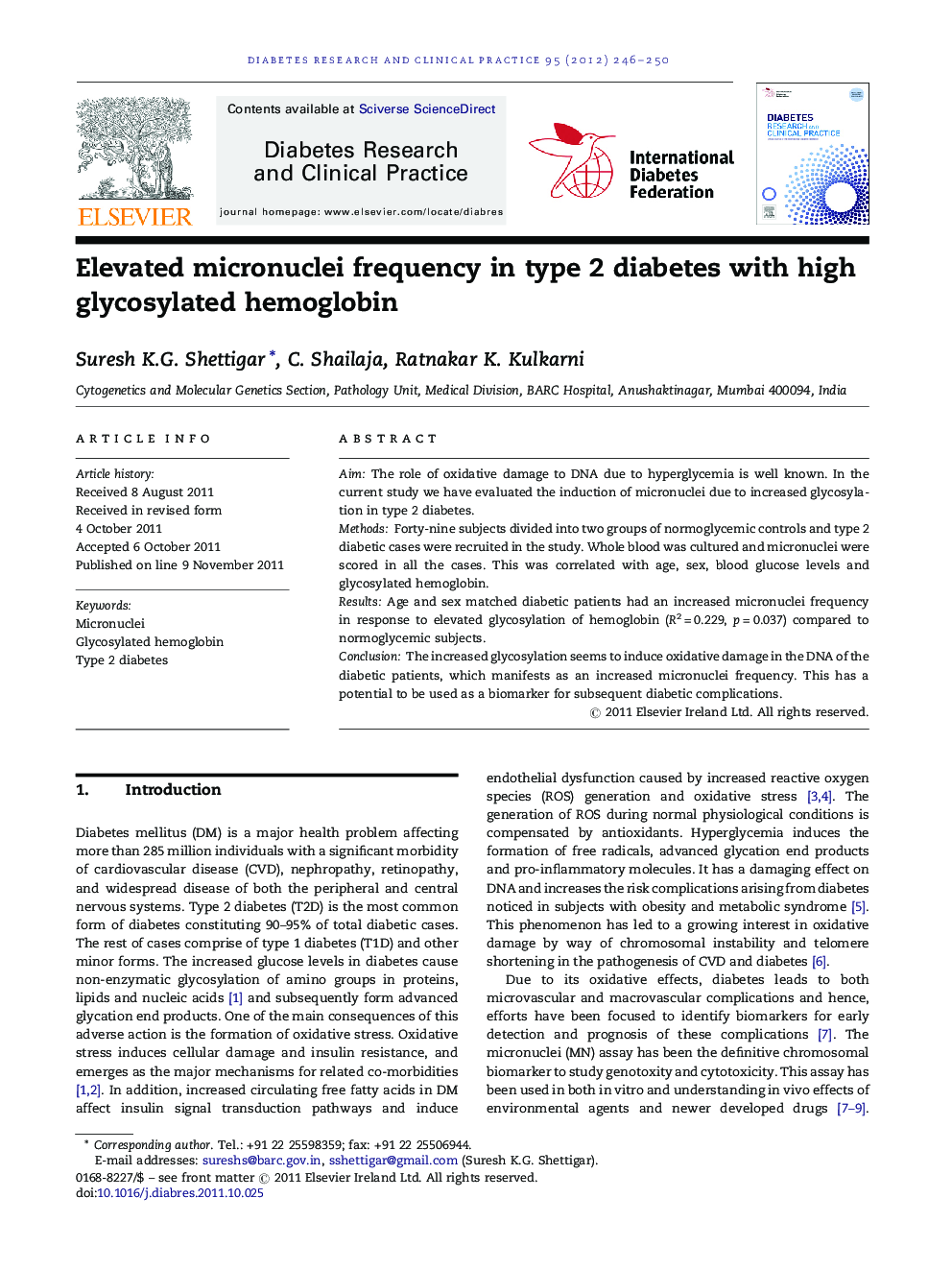| Article ID | Journal | Published Year | Pages | File Type |
|---|---|---|---|---|
| 2797012 | Diabetes Research and Clinical Practice | 2012 | 5 Pages |
AimThe role of oxidative damage to DNA due to hyperglycemia is well known. In the current study we have evaluated the induction of micronuclei due to increased glycosylation in type 2 diabetes.MethodsForty-nine subjects divided into two groups of normoglycemic controls and type 2 diabetic cases were recruited in the study. Whole blood was cultured and micronuclei were scored in all the cases. This was correlated with age, sex, blood glucose levels and glycosylated hemoglobin.ResultsAge and sex matched diabetic patients had an increased micronuclei frequency in response to elevated glycosylation of hemoglobin (R2 = 0.229, p = 0.037) compared to normoglycemic subjects.ConclusionThe increased glycosylation seems to induce oxidative damage in the DNA of the diabetic patients, which manifests as an increased micronuclei frequency. This has a potential to be used as a biomarker for subsequent diabetic complications.
